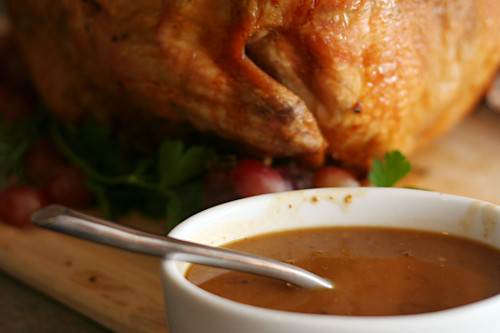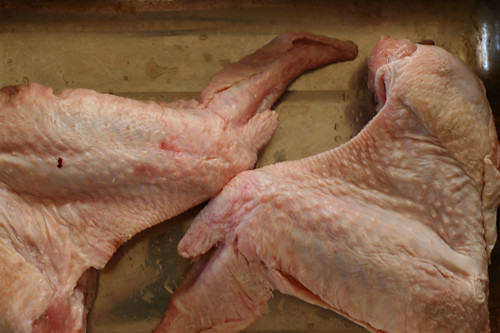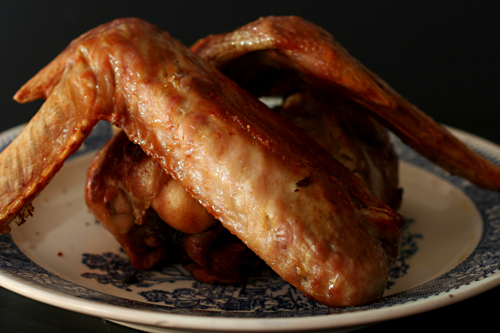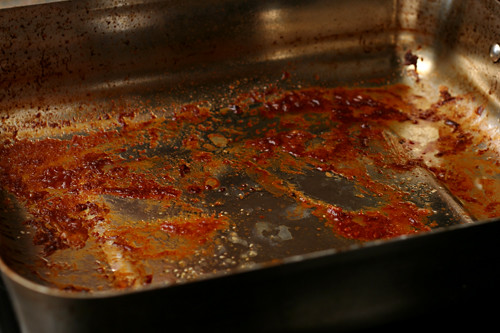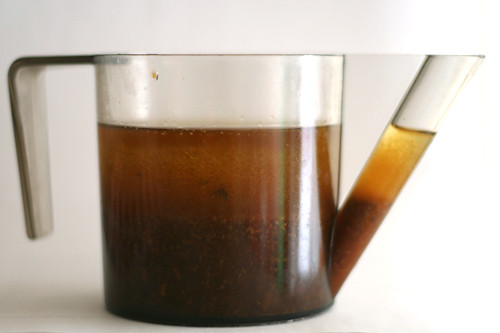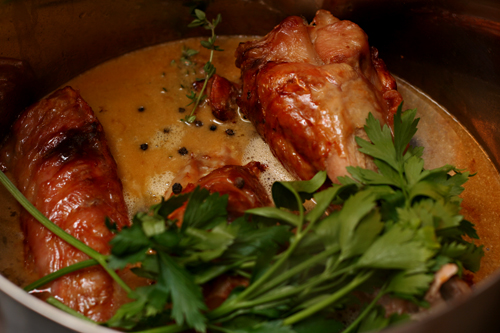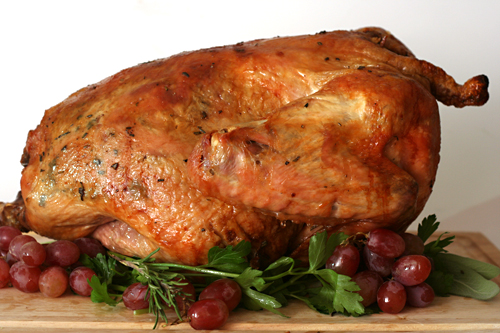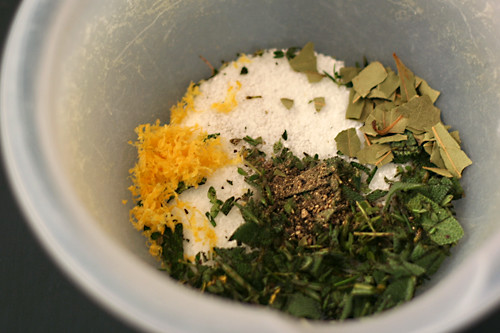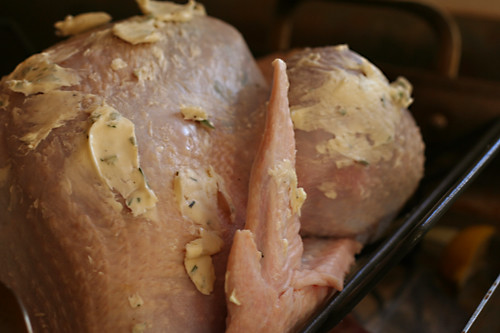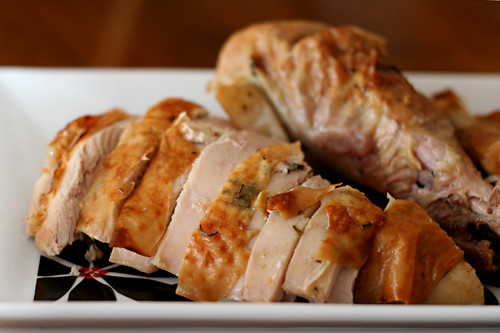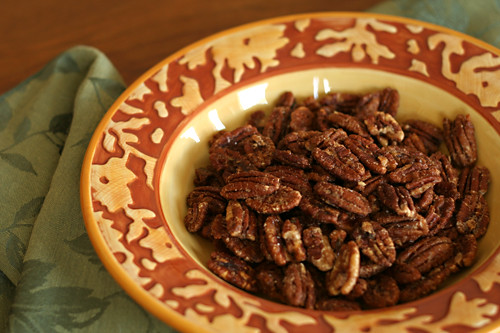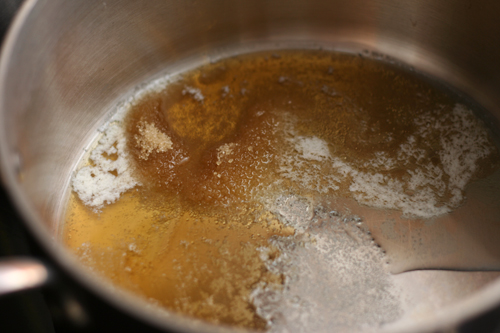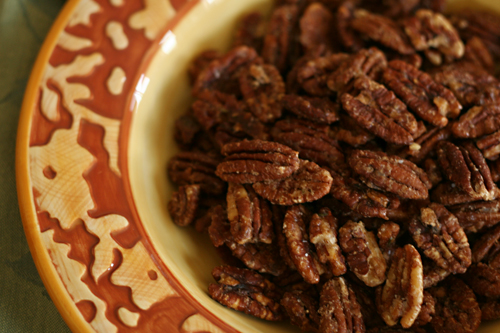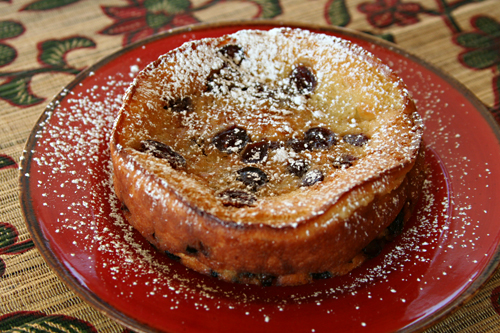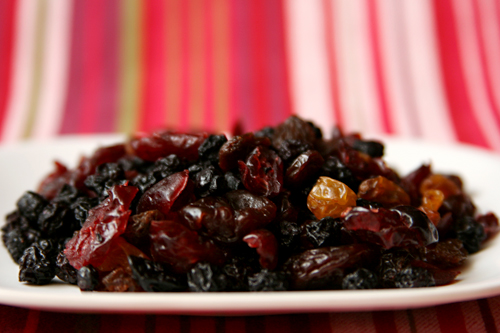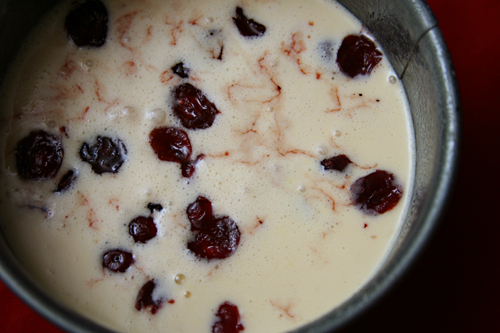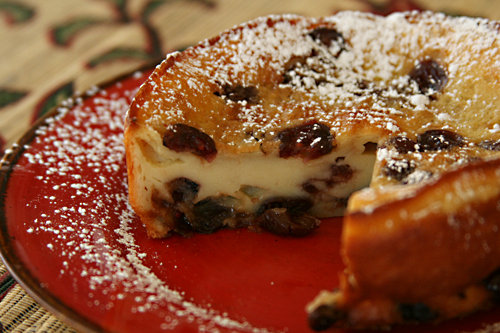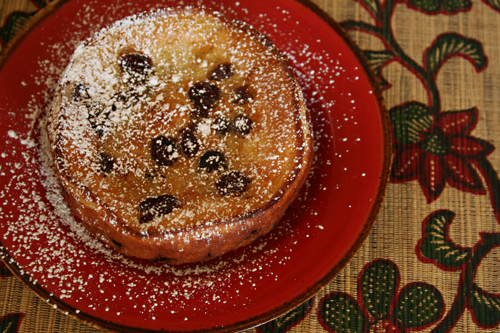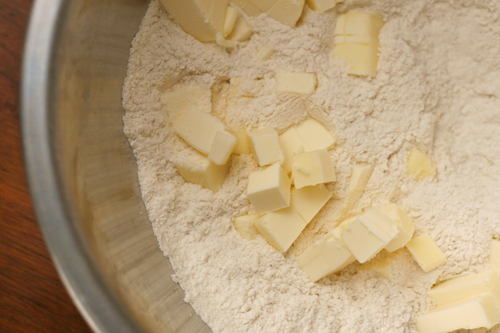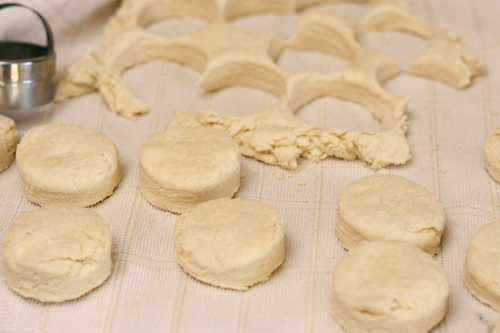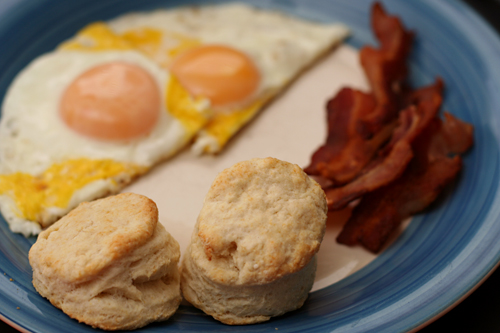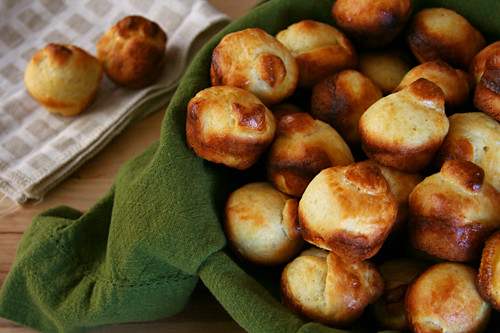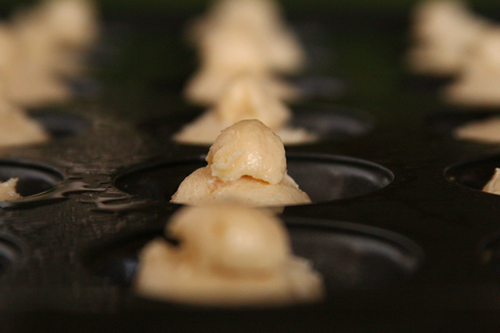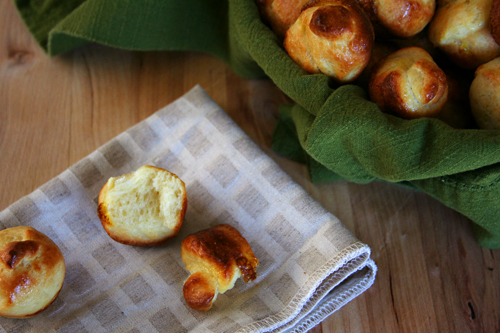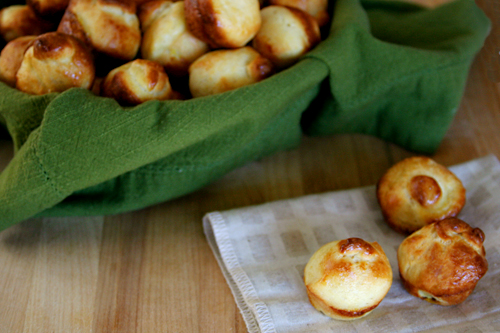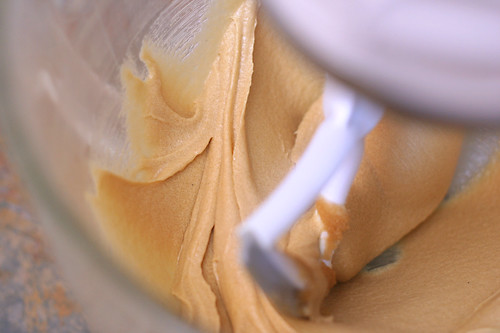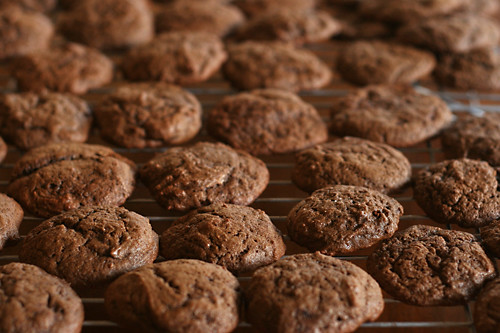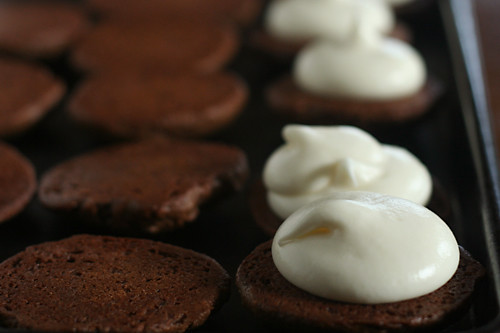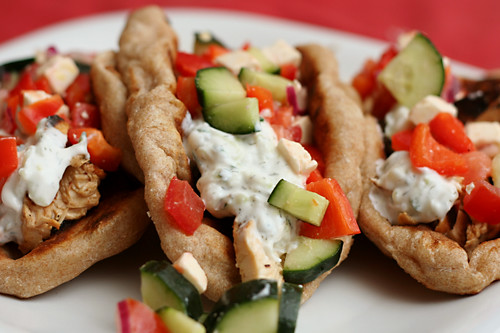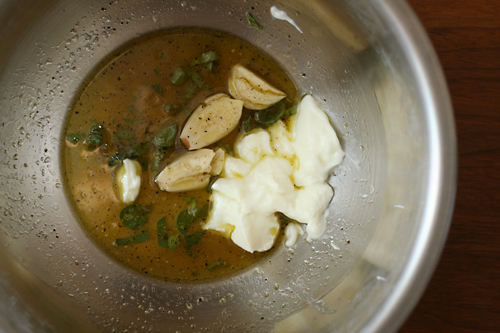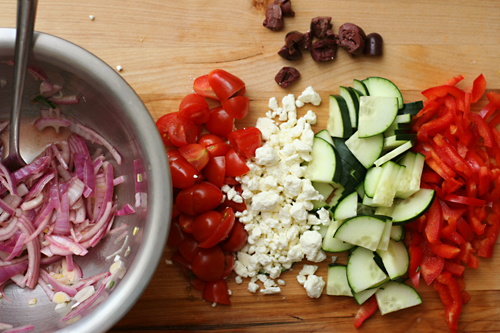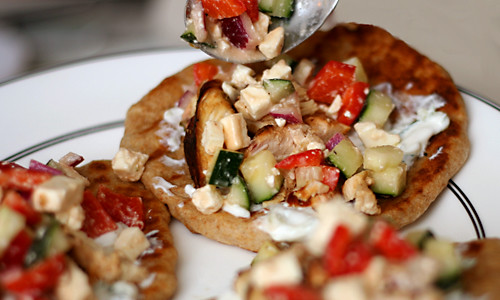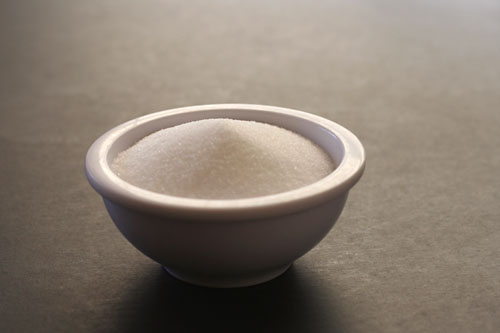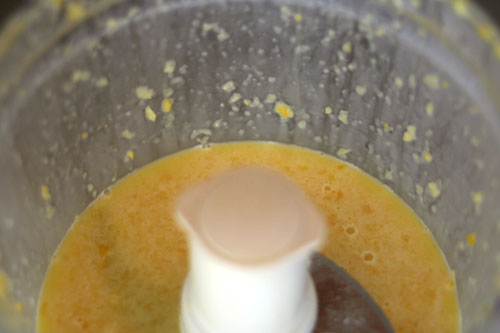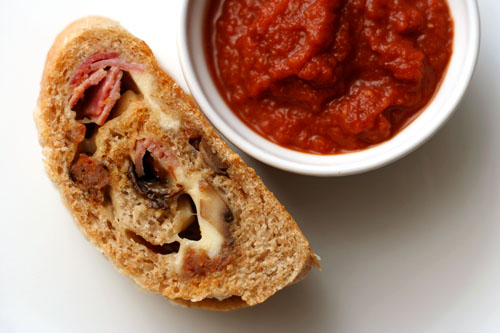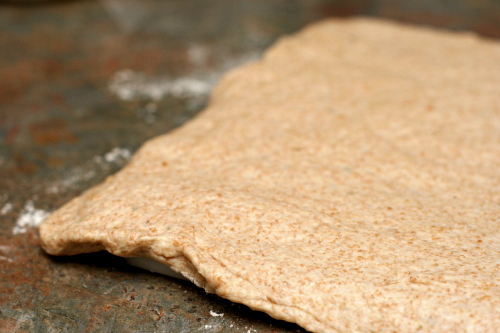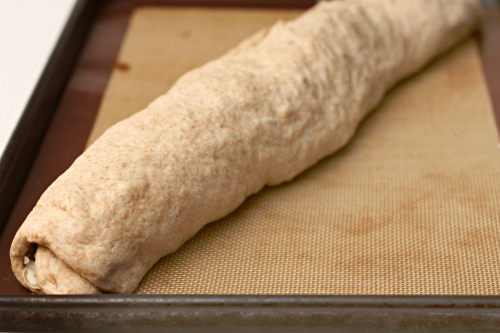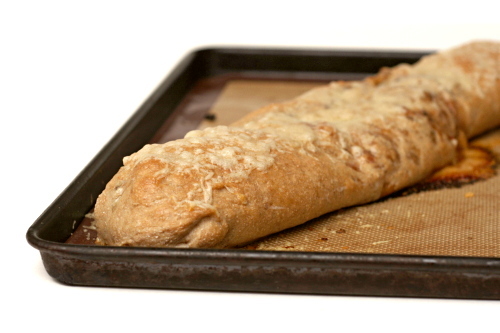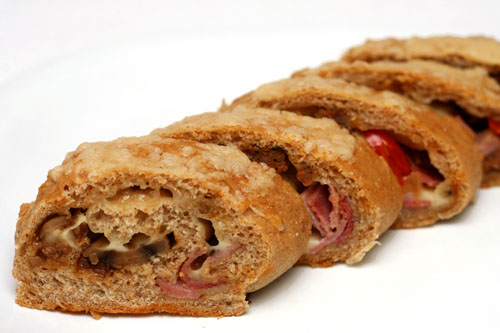Here’s why this gravy is so good:
First, homemade turkey stock. I know, I go overboard, and while you aren’t wrong, keep in mind that this is not a difficult step. You throw turkey wings – they’re not expensive – in the oven, caramelize vegetables in a stockpot, and then mix the two with water and leave it alone for a few hours while it simmers away. Oh, and deglaze the roasting pan the turkey wings were in. That’s where the good stuff is.
Second, a medium-dark roux. You aren’t just cooking the raw flavor out of the flour here, you want the flour itself to contribute a nutty flavor. It loses some of its thickening power when you do this, but you didn’t want gloppy gravy anyway, did you?
Third, wine. You might be doing this already, but if not, what the heck? Deglaze that roasting pan after your turkey roasts with wine. If you want flavor, and why wouldn’t you, water isn’t enough.
The first time I made gravy like this, I poured it over everything on the plate, and that’s the thing about gravy – it affects the turkey, the stuffing, and the potatoes. That’s half the Thanksgiving plate, which means that gravy shouldn’t be an afterthought. This gravy was so good I ate the leftovers with a spoon. The method isn’t so different from any other gravy, so why not follow these simple tricks for such a payoff?
One year ago: Prosciutto-Wrapped Neufchatel-Stuffed Jalapenos
Two years ago: Pumpkin Scones
Three years ago: Gratin Dauphinois (Potatoes au Gratin)
Printer Friendly Recipe
White Wine Gravy (adapted from Emeril and Cook’s Illustrated)
4 cups Golden Turkey Stock (recipe below)
4 tablespoons unsalted butter
¼ cup all-purpose flour
1 cup dry white wine
Salt and freshly ground black pepper
1. In a small saucepan, bring the turkey broth to a simmer. Reduce the heat to low; cover to keep warm.
2. In a large heavy saucepan, melt the butter over medium-high heat. Stir in the flour and cook, whisking constantly, until the flour just starts to smell nutty and become caramel-colored, 6-8 minutes. Add the broth and bring to a simmer, whisking often. Turn off the heat and cover.
3. After the turkey has roasted, strain the pan juices through a fine-mesh strainer into a glass-measuring cup; skim or pour off the fat from the strained liquid. Discard the solids in the strainer.
4. Place the roasting pan on 2 stovetop burners over medium heat; add the wine and defatted pan juices to the pan, bring to a simmer, and scrape to loosen any brown bits from the bottom of the pan.
5. Add the liquids from the deglazed roasting pan to the broth mixture. Bring to a simmer over medium-high heat, then reduce the heat to low and simmer for 10 minutes, whisking occasionally. Adjust the seasonings with salt and pepper if necessary.
Golden Turkey Stock (from Bon Appétit via epicurious)
Makes about 7 cups
If you’re roasting a salted or brined turkey, don’t add salt to the broth, because the gravy might end up too salty.
4½ pounds turkey wings, cut in half
1 large onion, chopped coarse
1 large carrot, chopped coarse
1 large celery stalk, chopped coarse
6 fresh Italian parsley sprigs
1 bay leaf
½ teaspoon dried thyme
¼ teaspoon whole black peppercorns
1. Heat the oven to 400 degrees. Arrange the turkey wings in a large roasting pan; roast until deep brown, turning once, about 2 hours total.
2. Transfer the wings to a large bowl. Spoon about 3 tablespoons of the turkey fat from the roasting pan into a large pot (reserve roasting pan). Add the onion, carrot, and celery to the pot. Sauté over medium-high heat until the vegetables are golden, about 20 minutes.
3. Meanwhile, add 2 cups of water to the roasting pan; place the pan over 2 burners and bring to a boil, scraping up the browned bits. Add the liquid from the roasting pan to the pot with the sautéed vegetables. Add the turkey wings, herbs, and enough cold water to cover the wings by 1 inch.
4. Bring the water to a boil. Reduce the heat to medium-low; simmer uncovered until the stock is very flavorful and reduced to 7½ to 8 cups, about 2½ hours. Strain the stock into a large bowl. Cool 1 hour, then refrigerate until cold, about 3 hours. (Can be made 3 days ahead. Cover and keep chilled. Can also be made and frozen 2 weeks ahead.) Spoon off the fat from the surface before using.
